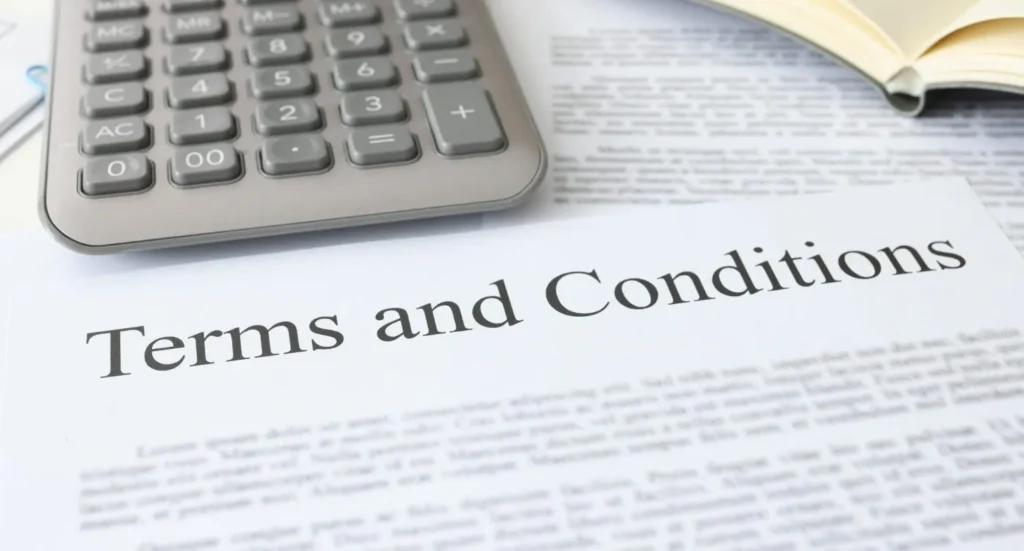Many property developers, landlords and buy to let property businesses are considering incorporation given its significant cost and tax advantages. If you’re also thinking of transferring/incorporating your property rental business to a Limited Company but aren’t sure, “Incorporation Relief” might convince you to do so.
It should come as no surprise that transferring properties from a Sole Trader/Partnership business to a Limited Company could lead to a significant tax liability, especially in terms of capital gains tax. This tax is imposed on the difference between the purchase price and the market value of the chargeable assets on the transfer date. To mitigate these potential burdens, the UK tax system provides a mechanism known as Incorporation Relief.
Defining s162 Incorporation Relief
Incorporation Relief falls under Section 162 Taxation of Chargeable Gains Act 1992, introduced to offer tax relief to individuals who transfer their business assets to a company in exchange for shares during the process of incorporation.
The relief operates by effectively deferring the capital gains tax liability that would normally arise from the transfer of business assets. In essence, it allows business owners to transfer their business into a company structure without incurring immediate CGT charges.
Incorporation relief is given automatically provided that the conditions discussed below are met, thus there is no need to claim the relief.
Conditions for Incorporation Relief

The following must be satisfied before incorporation relief is given:
- You must be a sole trader or in a business partnership
- You must transfer the whole of your business as a ‘going concern’
- You must transfer all assets of your business to the company except for cash
- The consideration paid to you by the company must be wholly or partly in shares
While these conditions might appear straightforward, things are not straightforward for rental property businesses. Let’s discuss the conditions for incorporation relief and practical issues in detail:
Does ‘Business’ exist?
The transfer of a ‘business’ to a limited company as a going concern is central to the availability of incorporation relief. Hence, the most crucial question for a property business lies in whether their activities qualify as a ‘business’ for incorporation relief.
HMRC has historically resisted any claims that owning property investment qualifies as a business and there is no statutory definition of what qualifies as a business for incorporation relief.
HMRC guidance is not definitive on this subject and states that,
“It is a question of fact whether a particular activity constitutes a business. It is not easy to draw the line, and each case must be judged on its own facts.”
So, What Constitutes a Business?
‘Elizabeth Moyne Ramsay v. HMRC’ is popular case law accepted by HMRC as a benchmark for what constitutes business. However, this is not the ultimate guideline. This case concluded that the taxpayer carried out a business as she used to spend on average 20 hours a week managing her property business.
The judge in the case stated,
“It is the degree of activity as a whole which is material to the question whether there is a business, and not the extent of that activity when compared to the number of property or lettings.”
One common practice for managing the day-to-day activities of a rental business is outsourcing it to the letting agent. However, it can be argued that if all the management work is outsourced, it is far too passive to be considered more than an investment.
Some key indicators of what constitutes as a business that was highlighted in “Ramsay v. HMRC” case are:
- Is there a serious occupation?
- Is there an occupation or function actively pursued with reasonable or recognisable continuity?
- Is there a certain measure of substance regarding turnover?
- Is the activity conducted regularly and on sound and recognised business principles?
- Is the activity predominantly concerned with the making of taxable supplies to consumers for consideration?
- Is the activity of a kind which, subject to differences of detail, commonly made by those who seek to profit by them?
Therefore, HMRC manual CG65715 to staff was updated after the Ramsay case.
Whole Assets of the Business
Once you’ve established that your activities qualify as a ‘business’ for incorporation relief, you must transfer the whole of the assets of the business other than cash to the company. Retaining one or more properties in the business portfolio would prejudice incorporation relief for those transferred properties.
If you are looking to transfer a partnership business into limited company, you should be mindful that the assets transferred to the company are the partnership’s assets.
To distinguish between assets belonging to a partnership and other assets, there are no strict guidelines. Each case will be determined by its individual facts, any supporting documentation, and the parties’ intents.
Section 20 Partnership Act 1890 (1) provides two circumstances in which an asset becomes partnership property:
- Assets originally brought into the partnership stock; or
- Assets acquired, either by purchase or otherwise
- on account of the firm or
- for the purposes and during the partnership business.
Moreover, a partnership agreement generally outlines the property as being the partnership property.
Transfer of Assets in Exchange for Shares vs Cash
It’s crucial to remember that you will only receive incorporation relief on the component of the business you exchange for shares; as a result, capital gains tax is due on the cash component. Therefore, you’ll receive full relief only when the consideration is paid wholly in the form of shares.
You should also note that where part of the consideration consists of a credit balance to the director’s loan account, HMRC generally considers that to be cash consideration, thereby placing restrictions on the relief.
Transfer of Liabilities

Within your property business, there exists a combination of assets and liabilities. We previously discussed about transferring the complete asset portfolio to the limited company, but what about the liabilities?
Here comes the positive news: when a property business is incorporated, the business liabilities can also undergo a seamless transfer to the limited company.
Guidance is provided by the Extra Statutory Concession (ESC) in addressing the treatment of business liabilities within the scope of consideration. Upon transferring business liabilities from your property business to the limited company, ESC/D32 facilitates the exclusion of these liabilities from the calculation of ‘Other Consideration’.
This arrangement is underpinned by the notion that the transferor isn’t receiving cash to settle tax obligations associated with the transfer, and the value of shares in the company is lower than it would have been if the business was free of liabilities.
It’s important to note that this concession exclusively pertains to business liabilities i.e., the business liabilities that are transferred must be the same as in the hands of the individual(s) as they do in the hands of the company. However, should the company take over your personal liabilities, these will be factored into the consideration.
To know more about transferring liabilities along with the methods of transferring liabilities to a limited company. Read our article “Incorporation Relief – Transfer of Liabilities”.
How Incorporation Relief Works
The deferral of capital gains is the highlight of incorporation relief. The capital gains that would have otherwise been realised on the disposal of the chargeable capital assets are effectively held over into the value of share consideration issued to the transferors by the acquiring company through the application of incorporation relief.
The total capital gains on the transfer of the assets are multiplied by the value of the shares received and then divided by the total consideration to determine the incorporation relief.
Incorporation relief = Gains * Value of Shares received/ Total Consideration
As the deferred gain is rolled over, it is deducted from the base cost of the shares. When the shareholder sells his company shares, the gain will be charged.
Incorporation relief is one example of tax legislation where the government has tried to support businesses by removing tax barriers. Through this relief, property investors can defer their capital gains until they exit the business i.e., when they sell their shares.
Further, you can effectively transfer your business to company and take advantage of various tax and other benefits that a company structure offers
Read our article “Transferring Property from Partnership to Limited Company” if you’re looking to transfer your property partnership business to a limited company.
Applying for Incorporation Relief

Incorporation relief is given automatically through section 162 of the Taxation of Chargeable Gains Act 1992, contingent upon satisfying the above-mentioned conditions. Therefore, there is no requirement to claim incorporation relief.
However, incorporation relief might not always be in your best interests. Section 162A allows you to not apply section 162 to your business transfer. You must submit a written notice to HMRC.
Incorporation Relief: Examples
To further understand how the relief is calculated, let’s have a look at the examples below:
Full Relief
Examples
Tim incorporated his partnership business into a limited company and received 1,000 £1 ordinary shares in Tim Co Ltd. The shares had a market value of £100 each; therefore, the company’s worth was £100,000. The agreed chargeable gain on the assets transferred was £80,000.
Incorporation relief
Here, the incorporation relief is calculated as follows:
Incorporation relief=(Gains*Value of shares received)/Total Consideration
= (£80,000 * £100,000)/£100,000
= £80,000
Therefore, full incorporation relief equal to the chargeable gain was obtained.
Base cost of the shares in the new company
Here, base cost of shares is calculated as follows:
Base cost of shares = Market value of shares at incorporation – Incorporation relief
= £100,000 – £80,000
= £20,000
Therefore, the cost of the shares is reduced by the amount of deferred gain of £80,000.
Partial Relief
Examples
Tim incorporated his partnership business into a limited company and received 1,000 £1 ordinary shares in Tim Co Ltd and £30,000 cash. The shares had a market value of £100 each, and the company’s worth was £130,000. The agreed chargeable gain on the assets transferred was £80,000.
Incorporation relief
Here, the incorporation relief is calculated as follows:
Incorporation relief=(Gains*Value of shares received)/Total Consideration
= (£80,000 * £100,000)/£130,000
= £61,538
Therefore, partial incorporation relief was obtained. Tim is liable to pay capital gains tax on the balance of chargeable gain of £18,462 (£80,000 – £61,538).
Base cost of the shares in the new company
Here, base cost of shares is calculated as follows:
Base cost of shares = Market value of shares at incorporation – Incorporation relief
= £100,000 – £61,538
= £38,462
Therefore, the cost of the shares is reduced by the amount of deferred gain of £61,538.
No Relief
Example
Tim incorporated his partnership business into a limited company and received £100,000 cash. The company’s worth was £100,000. The agreed chargeable gain on the assets transferred was £80,000.
Incorporation relief
Here, the incorporation relief is calculated as follows:
Incorporation relief=(Gains*Value of shares received)/Total Consideration
= (£80,000 * £0)/£100,000
= £0
Therefore, no incorporation relief was obtained. Tim is liable to pay capital gains tax on the chargeable gain of £80,000.
As you can see in the above examples, the capital gains tax base cost for the shares issued will equal the market value of the whole business acquired, less incorporation relief.
Moreover, only the gain concerning the issued shares can be rolled over under incorporation relief when the total consideration includes other considerations in addition to shares.
Conclusion
Incorporation relief is not straight forward and there are many practical issues that needs to be looked at to determine whether a business is eligible for this relief.
Proper planning is required to get the best when transferring the property business into the company as per your need. Our experienced tax advisors can help you plan more efficiently.
[elementor-template id=”682236″]



